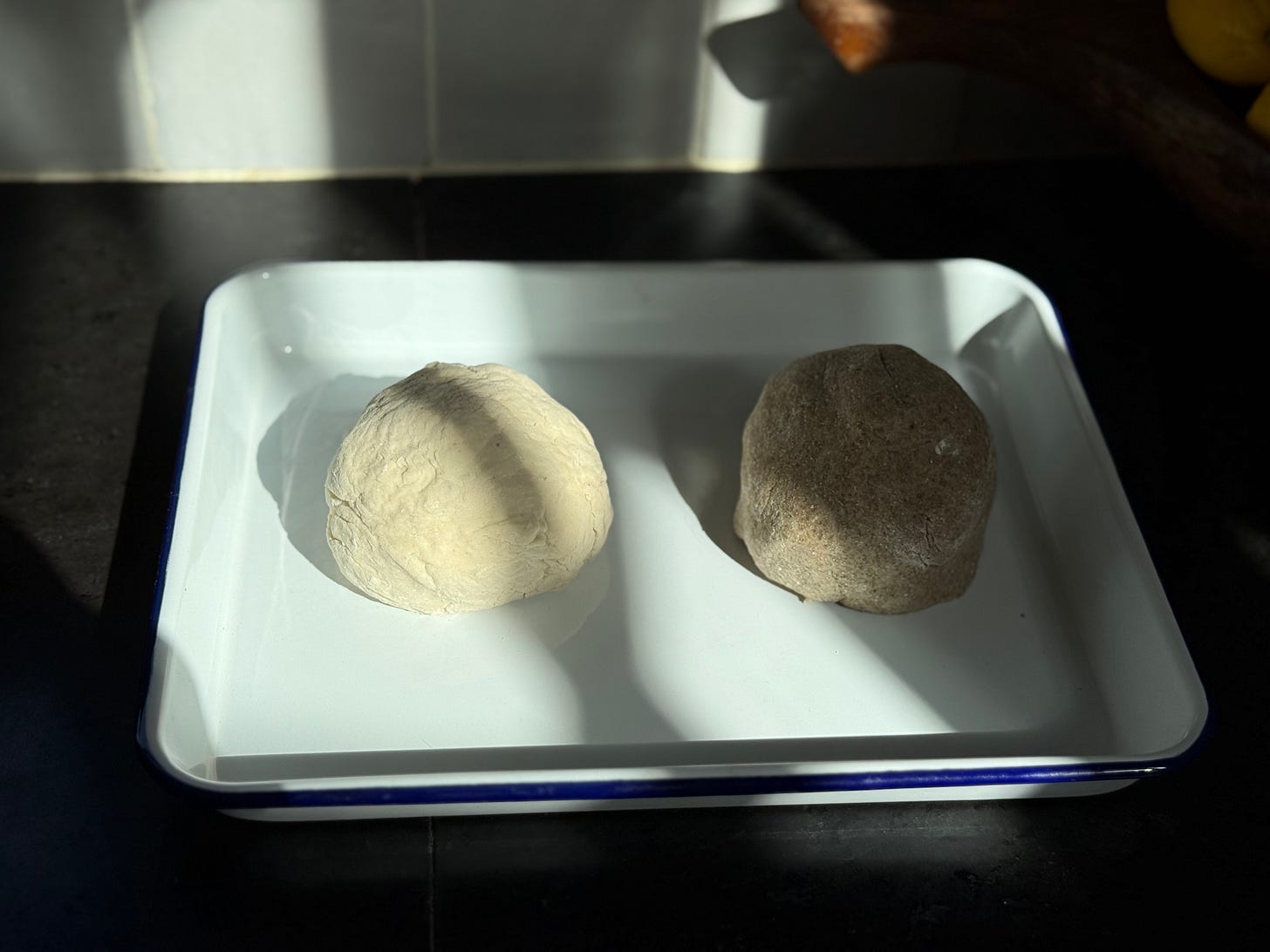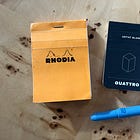The Official Treehouse Analysis of "All Fours"
I have to talk about this under-explored detail from last year's seismic, runaway hit.
Last year, like countless other elder millennials and their counterparts, I read a book whose hype grew to such a fever pitch that it became required reading,
’s All Fours. The rippling effects of this book can’t really be understated: people are talking at lot about perimenopause, people are exploding their lives, people are newly exploring their sexuality and orientation, people are taking in massive amounts of daily protein and hormone replacement therapy and weight-bearing exercise. People are forming robust communities concerned with all of the above.And while I support those for whom this book and these aspects of the book have been enlightening and empowering—light a match; walk away! lift a dumbbell! apply estrogen cream!—I can’t help but notice that there is one detail, one little under-explored corner of this book, one little stone yet to be turned. And I would like to talk about it now.
It occurs in Part 2, Chapter 13, after the narrator has returned home:
I cleaned around all our doorknobs with boiled dough made from an early settler’s recipe. I rubbed the dough all over everything like a big, soft eraser, kneaded the dirt into the dough and rubbed some more. When the dough ball became black it was time for a new one; they lay on a tray in the refrigerator, pale, inedible buns.
“You used to make cupcakes,” Sam said, poking a doughball.
OK WHAT, is early settler’s cleaning dough? And why is no one talking about it?
For one, it may be because there is basically next to no information about cleaning dough (sometimes also called “cleaning putty”) readily available. I consider myself to be a fairly proficient finder of things, but really, there I haven’t found much. I enlisted a good friend—a scientist, researcher, someone who I think can generally-speaking find the answer to a-ny-thing—she ended up essentially nowhere.
So buds, we’re going to have to recreate what we can and then try to cook up some of this stuff to figure it out.
The technique of using some sort of malleable mass to clean surfaces dates back to the 18th century (maybe earlier, but I couldn’t find anything referring to settlers) and was widely used for a long time. The most enduring use of cleaning dough is for preservation work: for restorers who need to get centuries of dust, grime, and grit off of things like frescoes, wallpaper, and books without diluting or damaging what’s underneath. There are pre-mixed products available; Absorene Magic Ball Cleaner (invented 1891!) seems to be a popular pick. However, I did find some references to home-mixed material.
First comes from a house and home handyman advice column that ran in the Chicago Tribune in 2008. The advice-seeker seems to have been in a similar scenario to me (heard about this stuff; can’t find much about it) and the advice-giver, columnist Peter Hotton, had some knowledge of it and a recipe, pulled from a book called “Formulas, Methods, Tips, and Data for Home and Workshop” by Kenneth M. Swezey. Rye flour plays a central roll here, so I went to find the book, happily available from the Internet Archive.
WALLPAPER CLEANERS
The basic ingredient of many wallpaper cleaners is gluten, which may be supplied satisfactorily by the use of rye or wheat flour. The flour is made up into a dough with plain water or with water containing 25 perfect of common salt. Preservatives may be added, such as sodium salicylate, sodium benzoate, or borax.
All seemed well and good here until I reached the actual ingredient list. Sodium salicylate, fine, but kerosene? I don’t really want play around with kerosene, so sadly, this recipe became a pass.
Moving on! I found a restorer’s blog post—brief, but I’ll take it—indicating an “old technique” of creating a simple dough for cleaning walls painted with water-based paints—just flour and water. Another source (seemingly a personal email?) found through the American Institute for Conservation described a similar technique and even said that when the dough was allowed to sit it took on an “eraser like consistency.” This all felt less inclusive of kerosene and more my speed, so I decided to try it. (A third source skipped the mixing entirely and recommended “scrubbing” oil paintings with fully-baked loaves of bread!)
{{Additionally, while I have you (do I have you?), I’ll mention a more recent iteration that seems to be a spinoff from the slime trend, in that glue is a major player—mixed up here by Instagram hero Brunch with Babs or available to purchase over here.}}
I made two dough balls, pictured above. The left is bread flour and the right is rye flour—going for optimal gluten. And just water, that’s it. I started with the flour and then added water until things started to come together. Because we’re going for dust absorption and not delicious bread (sad), this is a pretty unsaturated, not-so-sticky mix here—and you can really knead it and throw it down until your arms want to fall off. All in the name of developing gluten. Then I let them sit for about 15 minutes.
I decided that, given the Babs video linked above and that my car is a pretty heinous location from toting two kids around in it, I would try the doughs there. At first, I tried pushing it into a dusty corner, but that seemed to leave sticky bread remnants behind. Perhaps the dough could have been even drier or sat longer. The rye was slightly better. Then, I tried the bread loaf technique and just sort of dusted it across like a sponge—I guess it was OK, but like, a sponge or dusting cloth would be better? All in all, I was unconvinced and also my car had little pieces of dough in unwelcome locations.
That said, July’s dough is boiled, not just mixed and mashed onto surfaces raw. So, while our first cleaning dough attempt is fun and moderately useful, it’s not really The One From The Book (and truly, that’s fine too).
There was a product produced by a company called Kutol, founded in 1912, and, at a certain point, it was the largest wallpaper cleaner in the world. Yet, in the 1950s, popularity for this type of cleaner started a dwindle, a combination of the introduction of vinyl coated papers and the declining use of coal as a heat source indoors—and Kutol decided to pivot. Kutol became PlayDoh, which happens to be a dough that is made—get this—by boiling its ingredients.
So, I did what any sane person would do and turned to Early Childhood Educator’s Reddit to find a suitable recipe.
Behold! My play-dough-ish dough! Back to the car!
This result was much better—you can mush it into little tight corners and all kinds of old snacks come along with it. My only regret is a slightly oily residue—you know, owing to the fact that the recipe uses oil—so if I were to do this again (will I ever do this again?), I would skip the oil part. But, yeah, it works; it’s dough; it’s boiled. If it’s not exactly the One From The Book, it’s probably pretty close.
Cleaning dough! No, it’s not coming out in your 40s; no, it’s not taking a secret vacation from your family; no, it’s not grueling exercise to perform a single dance. But, it’s something.
Do you think you’ll try it?
Very excellent, very loooong table. (LINK)
Sweet little red Swedish thing. (Not a fish.) (LINK)
There are so many adorable animals on Seattle Craigslist right now. (I checked and saw 5% of readership is in Washington state, hi!!)
I wanted to tell local readers about Herring Gut’s Seaweed Cheese event, but apparently it was yesterday! Moving on, later today, you can join a meetup mapping the high tide mark as part of a larger effort to observe areas vulnerable to coastal flooding—suppose to be a big old 11’+ tide today, eeps. (LINK)










Next time I recommend this newsletter this is the one I’m going to use to sell it.
The ALL FOURS discussion I’ve been long awaiting!